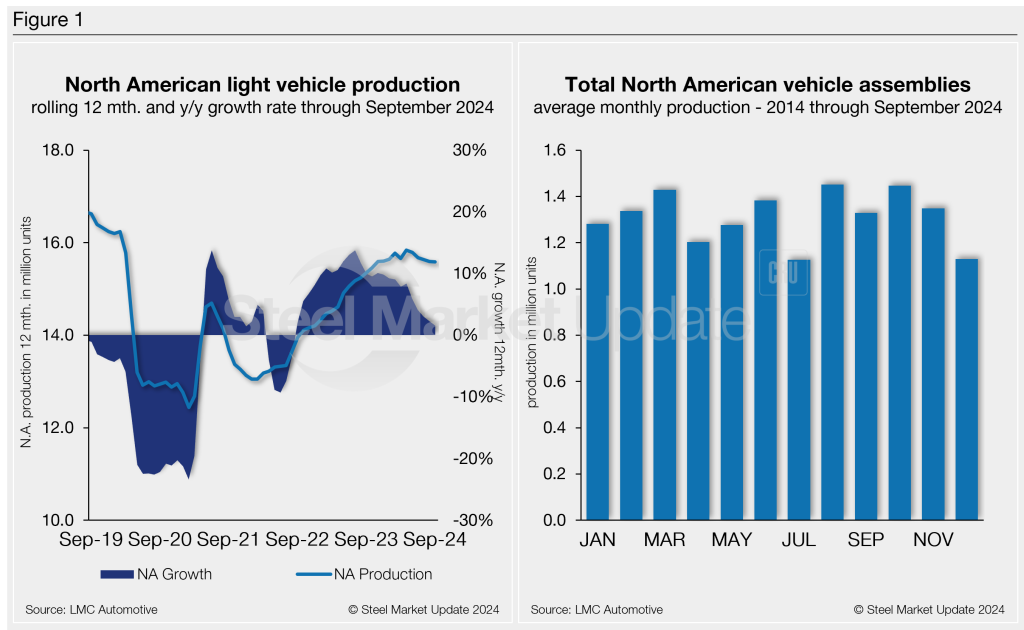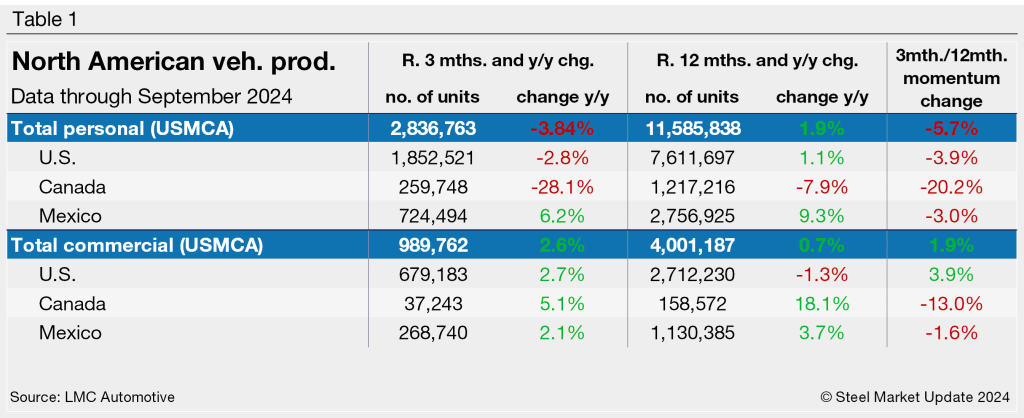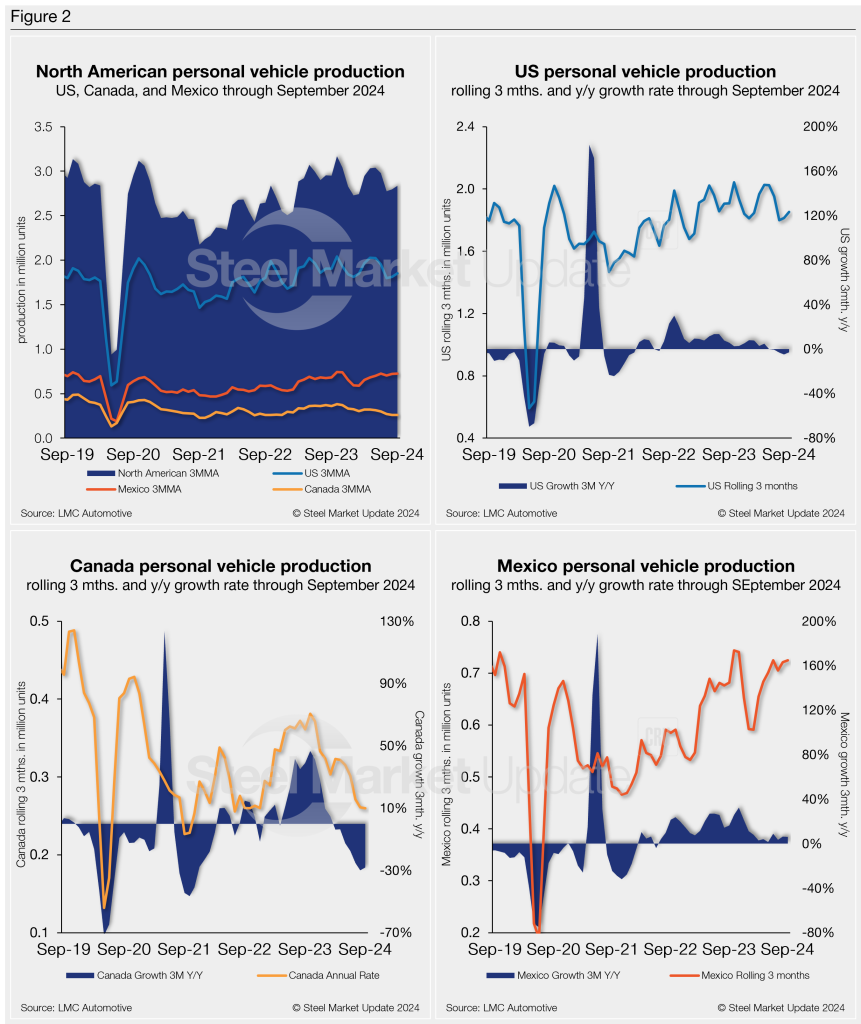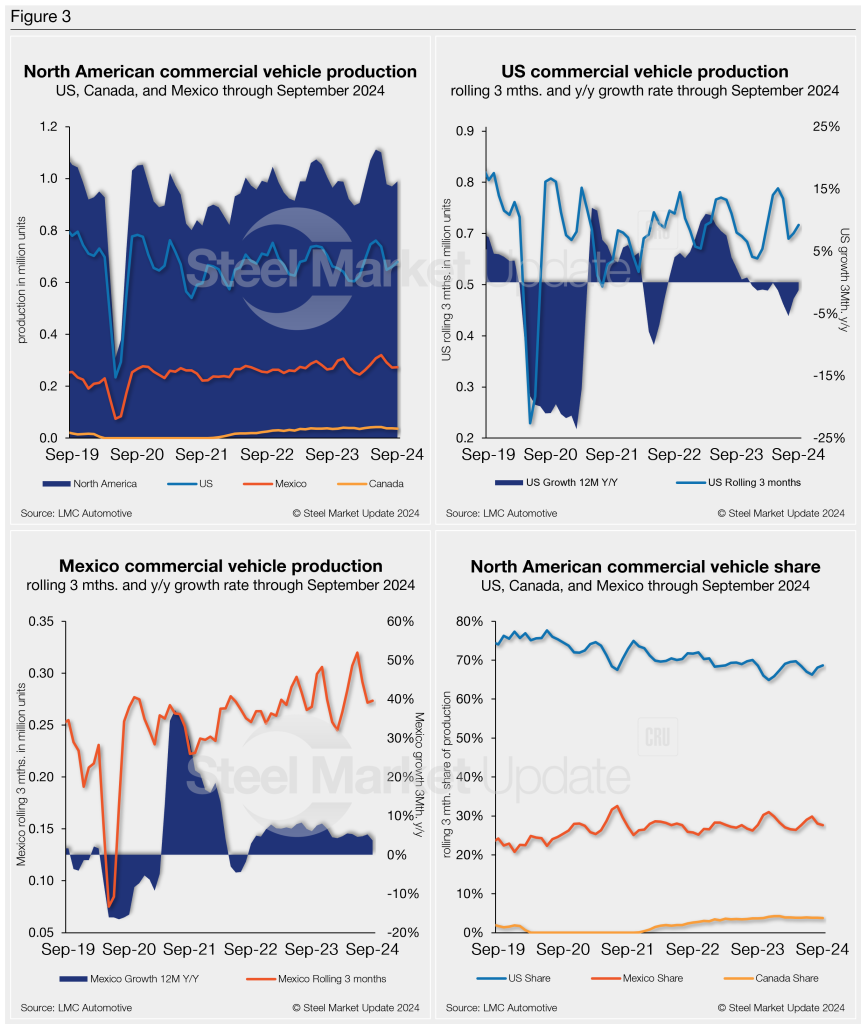Manufacturers/End Users
October 15, 2024
North American auto assemblies slip in September
Written by David Schollaert
North American auto assemblies fell by nearly 7% from August, but were still ahead of July’s 20-month low. Assemblies were also down just under 1% year on year (y/y), according to LMC Automotive data.
Auto production has fluctuated some after the typical summer slowdown from scheduled outages for maintenance programs, facility updates, and model-year changeovers. After recovering in August, September’s step back in assemblies comes as carmakers continue to downgrade and adjust vehicle output to meet curtailed market demand. The trend highlights the slew of recent WARN notices and layoffs.
North American vehicle production, including personal and commercial vehicles, totaled 1.328 million units in September, a 6.7% decrease from 1.423 million units in August. It’s roughly 0.6% behind the 1.336 million units produced one year ago.
Below in Figure 1 is a five-year snapshot of North American light-vehicle production since 2019 on a rolling 12-month basis with a y/y growth rate. Also included is a five-year snapshot of the average monthly production, which includes seasonality since 2019.

A short-term snapshot of assembly by nation and vehicle type is shown in the table below. It breaks down total North American personal and commercial vehicle production into US, Canadian, and Mexican components. It also includes the three- and 12-month growth rates for each and their momentum change.
For the three months and 12 months through September, the growth rate for total personal and commercial vehicle assemblies in the USMCA region is largely negative. The momentum saw a shift due to a boost in commercial assembly vehicle segments.

Personal vehicle production
The longer-term picture of personal vehicle production across North America is shown below. The charts in Figure 2 show the total personal vehicle production for North America and the total for the US, Canada, and Mexico.
In terms of personal vehicle production, this segment saw a 7.3% m/m decline in September. Assemblies last month totaled 970,905 units, down 76,565 units vs. August. The result was not as pronounced as the same period one year ago, with just a 3.5% loss.
The US saw a 7.2% m/m production loss, with 50,174 fewer units produced in September. Mexico produced 24,428 fewer units (-9.3%), while Canada’s production was down by just 1,963, units (-2.1%).
Production share across North America was little changed. The US saw personal vehicle production share of the North American market at 65.3%, followed by Mexico and Canada at 25.5% and 9.2%, respectively.

Commercial vehicle production
Total commercial vehicle production for North America and the total for each nation within the region are shown in the first chart in Figure 3 on a rolling three-month basis. Commercial vehicle production in the US and Mexico and their y/y growth rates, as well as the production share for each nation in North America, are also shown.
North American commercial vehicle production was much better in September either. The region saw a 4.9% m/m decline with a total of 357,216 units, down 18,352 from August. Despite the lower m/m total, September’s output was 8.2% above last year.
The US saw an 11% m/m drop, with 29,766 fewer commercial vehicles assembled in September. Mexico followed, down 13.8%% (-12,387 units), and then Canada, down 6.7% (-973 units).
Despite the decline, September marked Canada’s 35th consecutive month of assembling commercial vehicles, after ceasing production for nearly two years from January 2020 through October 2021.
The market share across the region was also largely unchanged. The US total share was 68.6%, followed by Mexico with a 27.6% share, and Canada with a 3.8% share in September.
Presently, Mexico exports just under 80% of its light-vehicle production, with the US and Canada as the highest-volume destinations.

Editor’s note: This report is based on data from LMC Automotive for automotive assemblies in the US, Canada, and Mexico. The breakdown of assemblies is “Personal” (cars for personal use) and “Commercial” (light vehicles with less than 6.0 metric tons gross vehicle weight rating; heavy trucks and buses are not included).







